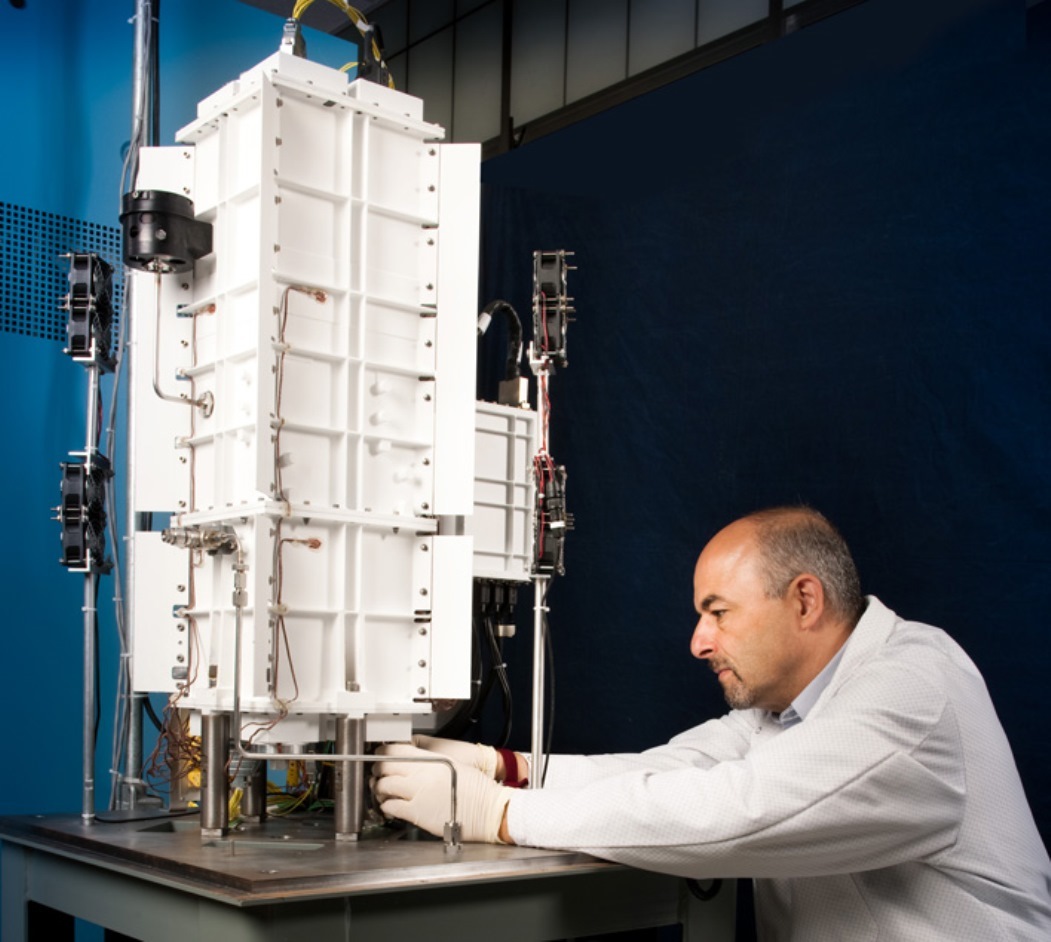
Engineering test unit for a Stirling generator being tested at NASA Glenn Research Center. Image credit: NASA
Stirling Converter Technology
Stirling Converters are a high efficiency engine which converts heat into electricity.
Inside a Stirling converter, a moving piston is driven by the heat of a fuel source. The piston would move a magnet back and forth through a coil of wire to generate electrical current in the wire. To prevent physical wear, the piston is suspended in a helium gas bearing, meaning it does not actually touch the inside of the mechanism.
Because the process used to convert heat energy into electricity, known as the Stirling cycle, is more efficient than the thermoelectric and solar powered systems, generators using Stirling technology could provide a more efficient means of producing power for spacecraft than existing power systems.
NASA had planned to complete development of two Advanced Stirling Radioistope Genertor (ASRG) units for flight by 2016, but chose to discontinue development of a system in late 2013. NASA's Glenn Research Center will continue development and testing of Stirling technology for potential use by future space exploration missions.


